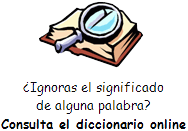 What
word appears most often in English? What
word appears most often in English?
It's "the," also known as the definite article.
Its partner, the indefinite article "a", is also among the top 10 most
frequent words in English.
According to Professor Elka Todeva of the SIT Graduate Institute in
Brattleboro, Vermont, "a" and "the" are also some of the most difficult
words for learners to figure out how to use without some assistance.
"A," "an" and "the" are called articles. Why are these small words so
hard to learn? More than 200 languages do not have articles. Other
languages have articles but use them differently than English does. As a
result, figuring out the logic of English articles can be challenging.
Professor Todeva says English article usage falls into certain patterns.
A basic understanding of common patterns can make learning articles
easier.
Fairy tales capture one such powerful pattern, which Elka Todeva calls
the a/the switch. The a/the switch occurs between the first and second
mention. It is a shift from new to already familiar information.
Listen for the articles as she reads an example. Pay attention to the
way "a" turns into "the" with the second mention of the old man and the
old woman.
"Once upon a time, there was an old man and an old woman who lived in a
little cottage in a vast open field. The old woman and the old man were
very hungry, so the old woman decided to bake a gingerbread man."
Before we explore this pattern and fairy tales further, let us look at
some basic rules for article usage.
Indefinite articles
"A" and "an" are indefinite articles used before non-specific members of
a group or category of nouns. The article "a" appears before singular
nouns starting with a consonant sound. For example, "I ate a banana."
The article "an" comes before singular nouns beginning with a vowel
sound. For example, "Give me an apple."
Definite article
"The" is called a definite article. "The" appears before nouns which are
specific members of a category as in, "I want to see the movie George
Clooney just made." Also use "the" with previously mentioned nouns. For
example, "We went to a movie last night. The movie was called Spy." Use
"the" with unique things like the sun, the moon, the front door, and the
tallest man in the world.
The zero article
In some situations, there is no article before a noun. Grammarians call
this the "zero article." The zero article appears before proper nouns,
names like Picasso and John Lennon. It also goes with names of places
and institutions which consist of a proper name and another noun, as in
Michigan State University.
There is also no article before the names of days, months, seasons and
holidays. There is no article before geographical names like Europe,
Italy, Tokyo, and Lake Superior.
The "zero article" applies to names of languages and nationalities, as
with Chinese or English. For example, "Spanish is spoken in Spain." But
if you are describing the people of that country, use the definite
article. "The Spanish are known for being friendly."
The zero article also goes with names of sports and academic subjects.
The "a/the switch"
Professor Todeva is both a learner and teacher of English. She says the
human brain loves patterns and finding logic behind things. She
encourages teachers and learners to explore grammatical patterns in fun,
engaging ways. She calls this "grammaring." Let's look at some common
patterns in article usage.
Professor Todeva takes us back to fairy tales, or traditional stories,
to demonstrate how the switch from "a" to "the" works.
"This particular pattern is very beautifully illustrated in most English
fairy tales and in many jokes as well. Most fairy tales in English start
with 'Once upon a time' … there is suspense, there is sweet anticipation,
we are not sure what the story is about yet; we expect something
exciting and something new, thus the use of the indefinite article at
the beginning of most fairy tales as in the following piece from The
Gingerbread Man:
"Once upon a time, there was an old man and an old woman who lived in a
little cottage - first mention - in a vast open field."
Here, the story teller uses the indefinite articles because the
characters are new to the listener or reader. When the information
becomes familiar, the story teller uses the definite article, "the."
"The old woman and the old man were very hungry, so the old woman
decided to bake a gingerbread man."
You might notice the "a/the switch" in most jokes. Here is an example.
"A man walks into a doctor's office. He has a cucumber up his nose, a
carrot in his left ear and a banana in his right ear.
"What's wrong with me?" he asks the doctor (because it's already implied).
And the doctor says, "You're not eating properly."
Notice how the joke sets the stage with new information first. It starts
with "a" before switching to "the."
|
 Sugerencias:
Sugerencias:![]() ). Utiliza el botón derecho del ratón y "guardar enlace" para
descargar el fichero a tu PC, tablet, Smartphone, etc.
). Utiliza el botón derecho del ratón y "guardar enlace" para
descargar el fichero a tu PC, tablet, Smartphone, etc.
![]() Escucha el audio
Escucha el audio
![]() ¿Quieres recibir en tu e-mail gratis y
periódicamente ejercicios, programas gratuitos, explicaciones y otros recursos
para mantener tu inglés sin esfuerzo? Apúntate a nuestro
cuaderno mensual de inglés.
¿Quieres recibir en tu e-mail gratis y
periódicamente ejercicios, programas gratuitos, explicaciones y otros recursos
para mantener tu inglés sin esfuerzo? Apúntate a nuestro
cuaderno mensual de inglés.




